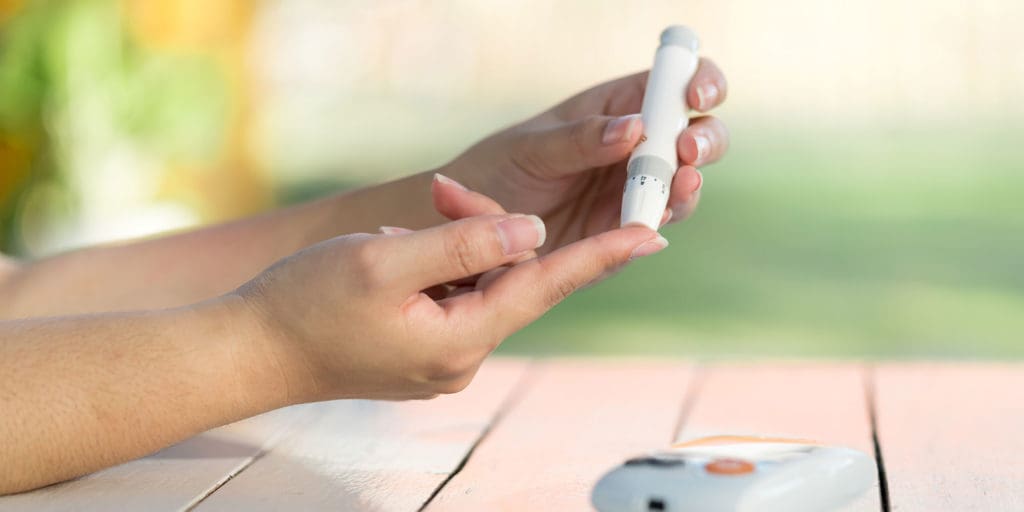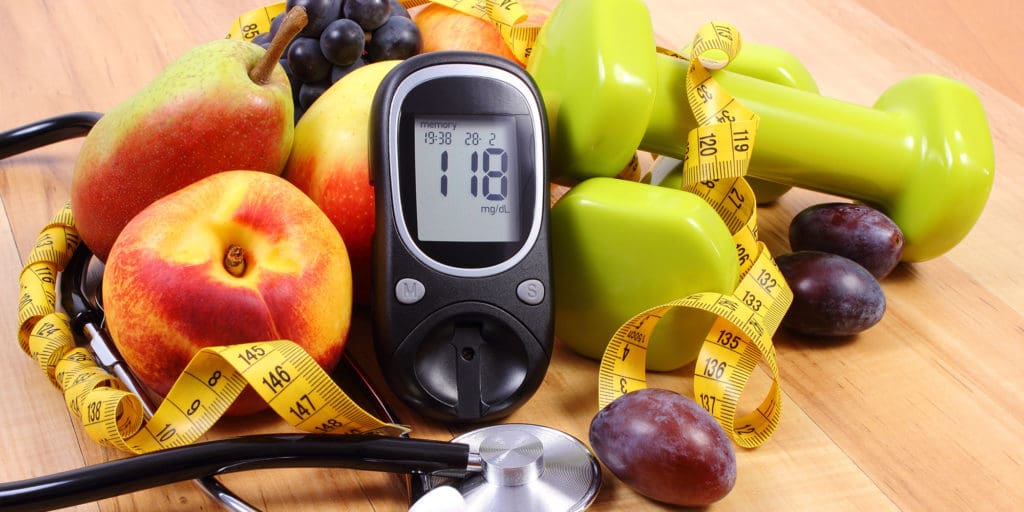Picture this: Lisa Parker is 37, and she has recently been diagnosed with type 2 diabetes.
Since she was in college, Lisa started developing a taste for fast food places located close to campus, and the stress of exams led her to binge on high sugar and the high fat goodies that were freely available at the university cafeteria. While she also ate fruit and salads every once in a while, these foods weren’t what she craved most, so they we rarely the bulk of her meals.
She gradually started gaining weight, and once she graduated college, Lisa was 30 lbs. heavier than she was during orientation week. As a professional, she became slightly more aware of the potential dangers of being overweight. She tried fad diets, and went to yoga classes every now and then, but was never able to make sustainable changes in what she ate, nor did she maintain a regular exercise regimen.
Now Lisa has been diagnosed with type 2 diabetes, and is being urged by her physician to make drastic changes to her diet.
How can she get started?
If you are in a situation similar to Lisa’s, know that you aren’t alone. Making a significant change in your lifestyle from one day to the next can seem nearly impossible. It’s not, and here’s how you can make lasting changes.
The key to long-term success is starting small. Small changes go a long way, and are much easier to work into your lifestyle. Eventually, small changes lead to bigger ones, and the changes become much easier than you had previously imagined.
This article is meant to be a practical how-to guide for how to get started planning your diabetes diet.
The Basics: What is Diabetes?

The World Health Organization provides a good definition of diabetes:
Diabetes is a chronic disease that occurs either when the pancreas does not produce enough insulin or when the body cannot effectively use the insulin it produces. Insulin is a hormone that regulates blood sugar. Hyperglycemia, or raised blood sugar, is a common effect of uncontrolled diabetes and over time leads to serious damage to many of the body’s systems, especially the nerves and blood vessels.
In healthy people, blood sugar remains within a normal range, no matter what they eat. Certain foods can elevate blood sugar more than others. One model for understanding this is the glycemic index. The glycemic index is a measure of how much a food can elevate blood sugar. Foods that are most potent in sugar include: refined and natural sugars, like white sugar and honey, and refined carbohydrates, such as bread, pasta and breakfast cereal.
When diabetes isn’t controlled, it affects the whole body. There is no cure for diabetes, but it can be effectively managed. With diet and exercise, it is possible to live a long, healthy life with diabetes.
How to Get Started on a Diabetes Diet
Now that we know that diabetes affects normal blood sugar, the first element is to understand that when we consume foods that are high in sugar and refined carbohydrates, our blood sugar will elevate and our bodies will have trouble controlling it. Additionally, if we don’t eat for a long time, our blood sugar can become dangerously low.
So, there are two basic things to keep in mind: 1) we need to eat at regular intervals, as recommended by your physician or registered dietician (usually every 3-4 hours), and 2) eat foods that will help us sustain healthy blood sugar levels without elevating them too much.
Foods to Eat for your Diabetes Diet:
 Before taking any diet advice, it is important that you first consult with your physician and registered dietician, both of whom have a better understanding of your specific needs. That being said, here is a general guideline for food groups that are generally optimal to include in diets for people with diabetes:
Before taking any diet advice, it is important that you first consult with your physician and registered dietician, both of whom have a better understanding of your specific needs. That being said, here is a general guideline for food groups that are generally optimal to include in diets for people with diabetes:
Complex carbohydrates
It is important to supply your body with fuel for normal functioning. Our body best uses fuel that comes from carbohydrates. However, it is best to choose complex carbohydrates that will process more slowly and won’t raise your blood sugar drastically. These include: fruits, vegetables, whole grains and legumes. You can also add in low-fat dairy.
Fiber-rich foods
Complex carbohydrates are often also foods that are rich in fiber. Fiber helps you digest more slowly, and helps to control blood sugar levels. In addition to the foods mentioned above, fiber-rich foods also include nuts.
“Good” or “heart-healthy” fats
Foods that contain polyunsaturated and monounsaturated fats help to lower cholesterol and triglyceride levels, which tend to be high in people with diabetes. High cholesterol levels raise your risk of heart problems. Fish like salmon, mackerel, tuna, sardines and bluefish are rich in Omega-3 fatty acids, a type of “good” fat. Other options include avocados, nuts, olives, olive oil and peanut oil. Aim to consume fish at least twice a week and nuts, seeds and oils in small quantities throughout the week.
Foods to Avoid During Your Diabetes Diet:
Keep these food components off your plate and out of your pantry:
- Saturated fats: these include beef and processed meats.
- Trans fats: they are often found in processed snacks and baked goods.
- Cholesterol: usually found in high-fat dairy products and beef. Avoid consuming more than 200 mg of cholesterol a day.
- Sodium: sodium raises blood pressure and can raise your risk of heart issues.
How to Plan your Meals for a Diabetes Diet
There are several ways to plan your meals to help control your diabetes. We have found the American Diabetes Association’s seven-step “Create Your Plate” method to be the most practical.
- Picture a line going down the middle of your dinner plate. Then on one side, cut it in half again so that you have three sections on your plate, one large and two smaller.
- Fill the largest section with non-starchy vegetables.
- In one of the small sections, put grains and starchy foods.
- In the other small section, put your protein.
- Add a serving of fruit, a serving of dairy, or both, as your meal plan allows.
- Choose healthy fats in small amounts. For cooking, use oils. For salads, some healthy additions are: nuts, seeds, avocado and vinaigrettes.
- To complete your meal, add a low-calorie drink like water, unsweetened tea or coffee.
You can check out this link for lists of foods to include.
Remember to practice at least 150 minutes of exercise a week (or 30 minutes a day, 5 days a week) to see the best results.
Conclusion on Diabetes Diets
 Being diagnosed with diabetes means that it is time to make some important changes in your lifestyle. However, the changes aren’t impossible, and, in fact, they reflect how we should all be eating to begin with. Rather than seeing it as “being deprived” from foods you have been accustomed to eating, instead see it as an opportunity to learn what is best for your body, and apply it on a daily basis. Eating right and exercising are ultimate forms of self care, and you deserve it.
Being diagnosed with diabetes means that it is time to make some important changes in your lifestyle. However, the changes aren’t impossible, and, in fact, they reflect how we should all be eating to begin with. Rather than seeing it as “being deprived” from foods you have been accustomed to eating, instead see it as an opportunity to learn what is best for your body, and apply it on a daily basis. Eating right and exercising are ultimate forms of self care, and you deserve it.
Have You Been Planning Your Type 2 Diabetes Diet?
We want to hear about your experience in the comments below!
Have a topic related to Diabetes you’d like to see us research and discuss?
Let us know by emailing us at info@painresource.com.
Are you on Facebook?
Join our online community by clicking here.

